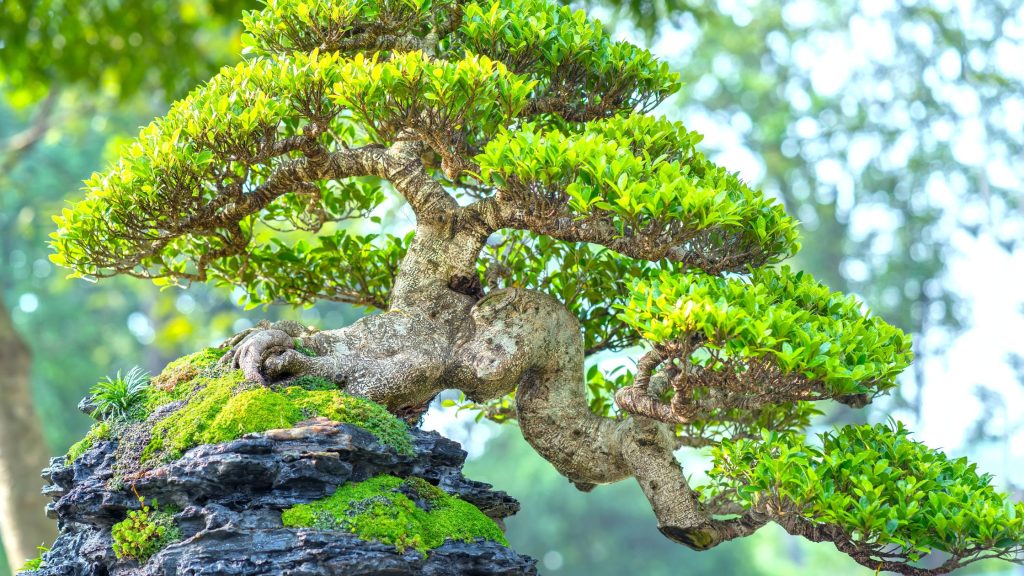If you are interested in learning how to bonsai an oak tree, this blog post is for you! This article will explain everything you need to know about how to bonsai an oak tree successfully.
We will discuss the different types of plants that can be used for bonsai, the techniques you will need to use, and how long it will take to learn how to bonsai an oak tree.
So if you are interested in learning how to bonsai an oak tree, come on board!
To create a bonsai oak tree from a germinating acorn, plant the acorn in perlite potting soil. Winterize your seedling by watering, maintaining temperature, and protecting it. After one year, repot your seedling and train it to become a bonsai through trunk growth, wiring, and pruning.
Table of Contents
Can You Bonsai An Oak Tree?
It is possible to bonsai an oak tree, but doing so is not simple. The first thing you need to do is locate a young oak tree that is still expanding its canopy.
After you have obtained your tree, you will need to perform routine pruning on it in order to direct its growth in the desired direction and to keep it from becoming too large.
In order to keep the tree from growing too large for its space, you will need to prune and prune the roots on a regular basis.
Oak trees need to be treated with care and patience in order to be bonsaied, but if you put in the time and effort, you can create a stunning miniature version of this stately tree.
What Is Bonsai?
Bonsai is the art of growing miniature trees in pots or containers. The word bonsai comes from the Japanese words “bon,” which means tray or pot, and “sai,” which means plant. Bonsai is not a specific type of tree; instead, it is a technique that can grow almost any type of tree in a small container.
The most important aspect of bonsai is the size of the tree. Bonsai trees are typically much smaller than their full-sized counterparts.
They are often only a few inches tall, and the leaves and branches are carefully pruned to maintain this small size.
Bonsai trees are grown in pots or containers that are shallower and wider than traditional planting pots. This allows the roots to spread out more evenly and prevents them from becoming too root-bound.
The soil mix used for bonsai is also different from regular potting soil; it is usually a mix of coarse sand, organic matter, and clay.
Many resources are available to help you get started if you are interested in growing bonsai trees. Some nurseries and garden centers offer books, websites, and even classes.
Once you have learned the basic techniques, you can experiment with different types of trees and different styles of bonsai to find what works best for you.
How Do You Bonsai A Tree?
Bonsai is the art of growing a tree in a pot. The main goal is to create a miniature copy of a full-sized tree. Bonsai trees are often seen in museums, homes, and office buildings.
There are many different ways to bonsai a tree. This post will show you how to bonsai an oak tree.
First, you must find a suitable container for your oak tree. The container should be shallower than it is wide. This will help prevent the roots from becoming too crowded. You will also need to ensure the container has drainage holes in the bottom.
Next, you will need to prepare the soil mix. You will need a well-draining soil mix high in organic matter for an oak tree.

You can purchase a pre-made soil mix or make your own by mixing equal parts of peat moss, perlite, and sand.
Once you have prepared the container and soil mix, it is time to plant your oak tree. Gently remove the tree from its current pot and loosen any compacted roots with your fingers. Place the tree into the prepared pot and fill in around the roots with your soil mix.
Firmly press down on the soil to remove any air pockets. Water thoroughly until water begins to drain from the bottom of the pot.
Now that your oak tree is planted, you need to prune it to encourage growth in the desired direction. Start by removing any dead or damaged branches.
Next, prune back side branches so that they are about two-thirds the length of the main branch.
Finally, cut back the main branches to about one-third of their original length.
After you have pruned your oak tree, it is important to provide proper care and maintenance. Water regularly and fertilize monthly using an organic fertilizer such as compost or manure tea. In addition, keep an eye out for pests and diseases and take action accordingly.
Your oak tree will thrive in its new home with proper care and attention!
Is Bonsai Bad For Trees?
The practice of bonsai does not harm trees in any way. The practice of bonsai can be helpful to trees.
The art of bonsai encourages the development of small, dense leaves and branches, which ultimately contributes to the overall improvement of the tree’s health.
In addition, by giving the tree a form that is more aesthetically pleasing, bonsai can assist in enhancing the overall appearance of the tree.
What Kind Of Trees Can Be Bonsaied?
Bonsai is the art of growing miniature trees in containers. The word “bonsai” is derived from the Japanese words “bon,” meaning tray or pot, and “sai,” meaning plant. Bonsai can be created from almost any tree species; however, some varieties are more commonly used than others.
Some of the most popular trees for bonsai include:
-Ficus (also known as fig trees)
-Junipers
-Maples
-Pines
-Azaleas
-Camellias
The key to bonsai success is selecting a tree that can grow in a small container. Trees with smaller leaves, needles, and compact root systems make better bonsai candidates.
Almost any type of tree can be successfully bonsaied with proper care and attention.
Conclusion
The answer to this question is “yes,” meaning that bonsai-ing an oak tree is something that can be done.
The Japanese art form known as bonsai refers to the technique of growing miniature versions of trees. This art form originated in Japan.
There is a wide variety of tree species that can be worked with using this method, and oak trees are one of those tree species that can benefit from its application.
The process of transforming a tree into a bonsai does not cause any damage to the tree in any way, and it is possible that the tree’s overall lifespan will be extended as a result.
Recent Posts
Have you found yourself wondering, 'why is my bamboo growing so slow?' Despite the fact that bamboo plants are remarkably fast-growing, it can sometimes take months (or even years!) to see any signs...
Miracle-Gro is a huge help when you are trying to get decent yields out of your plants or if you want them to thrive. However, you may have noticed that a single dose of fertilizer does little to...
